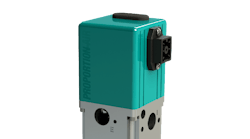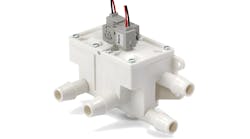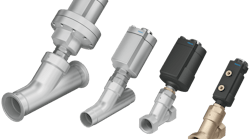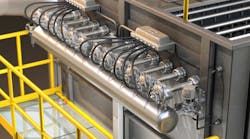ndustrial machinery can pose significant hazards to workers and associated equipment—hazards associated with both the pneumatic lines themselves and the moving components they operate. Systems that minimize these hazards have been developed to comply with two ISO safety standards, EN ISO 13849 and ISO 13118:2000, which mandate the dissipation of pneumatic energy to prevent unintended startup or movement in a machine.
As manufacturers increase their focus on equipment safety, design engineers need a clear understanding of these standards and how to comply with the required safety levels. Adding a pneumatic safety exhaust valve into an air preparation system offers one simple, cost-effective way to accomplish this.
Traditionally, the air trapped in the pneumatic lines had to be exhausted from pneumatic circuits with two valves to provide redundant safety. The downsides to this approach include the need to purchase the valves and other peripherals, and the plumbing and space needed to ensure safe evacuation of the pneumatic circuit. Unfortunately, this traditional approach is also relatively slow to exhaust.








